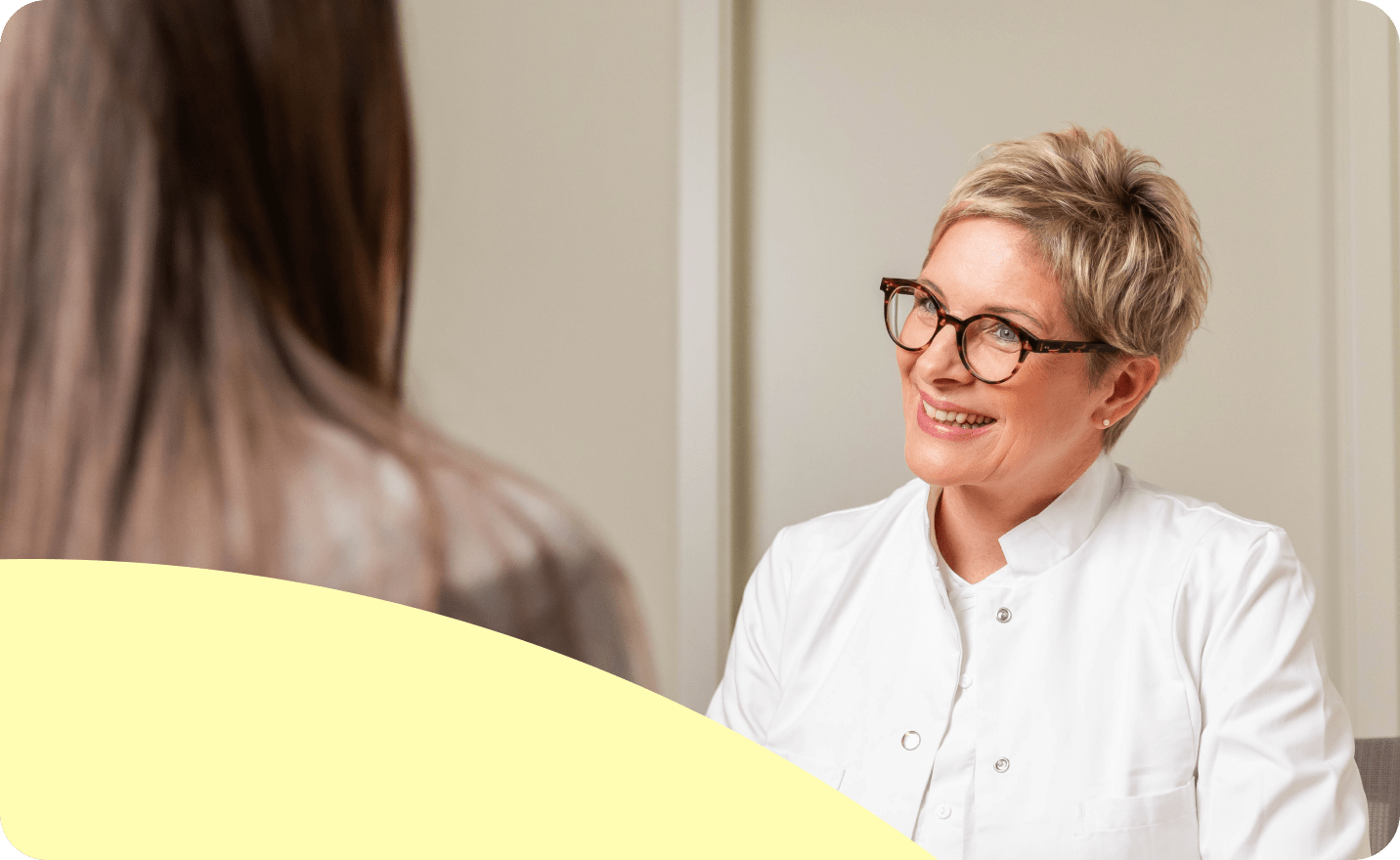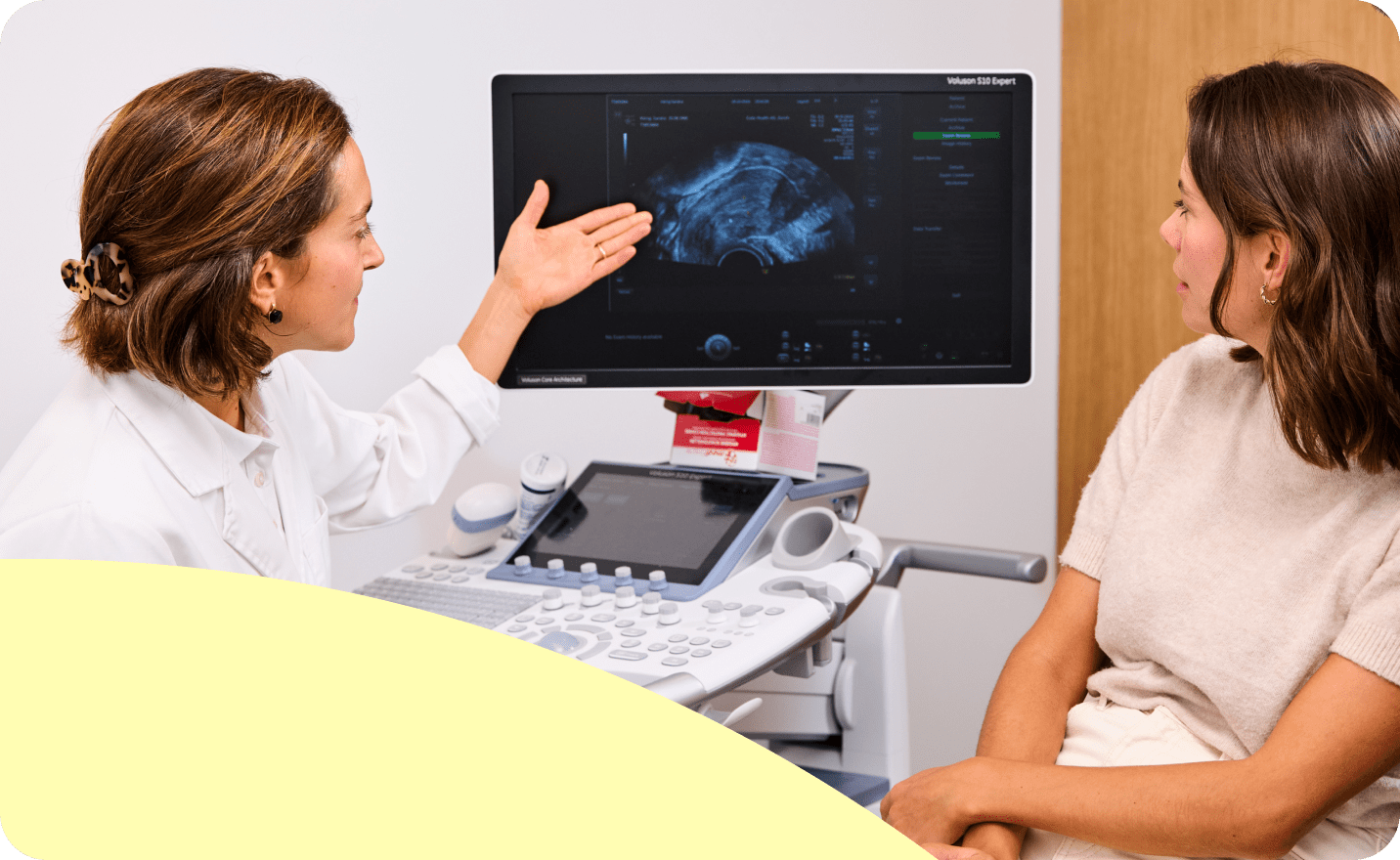Learn about the possibilities, procedures, risks and costs of egg freezing as a fertility preservation technique, so you can feel prepared to make the decision that’s right for you.
Many women want to have children someday. But if you haven't found the right partner, are working hard on your career, facing a medical procedure that could cause infertility, or are just not ready to have children yet, egg freezing could be a viable option to help you preserve your fertility.
Freezing your eggs does not guarantee that you will be able to have children in the future. However, it can be beneficial for preserving your fertility and giving you more options for later in life.
If you are considering egg freezing, you should know all the steps required for this treatment. In this article, we break down the egg freezing process to give you all the information you need about the possibilities, procedures, risks and costs of this fertility preservation technique, so you can feel prepared to make the decision that’s right for you.
What is egg freezing?
Egg freezing, or oocyte cryopreservation, is a method of preserving fertility. Egg freezing may be done for medical reasons (such as a medical condition or treatment) or non-medical reasons (referred to as elective or social freezing).
This procedure involves removing eggs from the ovaries, freezing them, and storing them for later use. Frozen eggs can be stored for up to 10 years in Switzerland.
When it is time to use these eggs for pregnancy, they are thawed and fertilised in a lab. The resulting embryo is placed inside the uterus in an assisted reproductive technology (ART) procedure, such as in vitro fertilisation (IVF).
Who benefits from egg freezing?
In addition to using egg freezing to delay childbearing until later in life, certain women dealing with infertility issues might choose to undergo a cycle of ovarian stimulation and egg retrieval before starting fertility treatment.
You may consider egg freezing as an option if:
- You want to preserve your fertility. If you want to have children in the future, freezing your eggs when you're younger can be helpful. This allows you to store your healthier, younger eggs for later use, which improves the chances of a successful pregnancy when you are ready.
- You have a medical condition that could impact your ability to have children, like lupus or other autoimmune diseases, a family history of early menopause, endometriosis, impending ovarian failure, or sickle cell anemia.
- You are facing a treatment that could potentially impact your ability to conceive, such as chemotherapy. In this scenario, freezing your eggs before treatment can help you safeguard your future chances of having biological children.
- You are undergoing in vitro fertilisation. You may choose to freeze eggs instead of embryos due to ethical or religious beliefs.
- You are undergoing gender affirmation surgery. You may harvest and preserve your eggs before starting testosterone therapy, allowing you to have a baby carried by a gestational carrier at a later date.
Note: Surrogacy is only legally allowed in a limited number of countries. This does not include Switzerland.
The egg freezing process explained, step by step
The egg freezing process involves multiple carefully monitored steps to ensure its success. Let's take a closer look at what these steps entail.
1. Evaluation
The first step is getting an initial assessment done by a reproductive endocrinologist at a fertility clinic. This evaluation includes reviewing your medical history, performing a physical examination, doing bloodwork, checking your fertility hormone levels, and using a transvaginal ultrasound to examine the number of eggs in your ovaries (known as your ovarian reserve).
Based on your medical history and test results, the reproductive endocrinologist will create a personalised plan to stimulate your ovaries in order to retrieve as many mature eggs as possible while minimizing the risk of ovarian hyperstimulation syndrome (OHSS).
You'll talk with your reproductive endocrinologist to find out how many eggs you can retrieve after the stimulation process. Sometimes, you might need to do the egg retrieval procedure more than once to collect enough eggs for in vitro fertilization (IVF).
You will review your medications, the instructions on mixing and self-administering them, along with the estimated timeline for the upcoming steps.
2. Ovarian stimulation
The timing of your injections and when you should begin them depends on your current stage in the menstrual cycle, your ovarian reserve, and the optimal timing as determined by your fertility specialist. Measuring your anti-müllerian hormone (AMH) levels can give an idea of your ovarian reserve. It helps determine how well your ovaries will respond to stimulation and how many cycles of egg retrieval you might need.
Different protocols may apply to different situations. Before starting the injections, you might need to take some fertility medications for a short period to coordinate the development of your follicles. These medications could include estrogen, leuprorelin (also known as leuprolide), or norethindrone acetate (a man-made form of progesterone), or birth control pills.
You will be given artificial hormones to encourage your ovaries to produce numerous eggs instead of the one egg that develops naturally every month. For this, you may need the following medications:
- Medications for ovarian stimulation. You might take drugs such as follitropin alfa or beta or menotropins to help your eggs develop.
- Medications to prevent premature ovulation. You could be prescribed a hormone medicine that you inject, like leuprolide acetate or cetrorelix, to prevent your eggs from being released too soon.
You may have to self-administer the injections in your abdomen; this should be done at the same time every day (typically in the evening) for 10 to 12 days. Your fertility specialist may modify your dosage, increasing or decreasing it based on how you react to the medication.
To see how well you respond to the medications that stimulate your ovaries, you will undergo blood tests. These tests measure the levels of estrogen and progesterone in your body. Normally, estrogen levels go up during follicle development, while progesterone levels stay low until after ovulation happens.
During your follow-up appointments, your specialist will track the progress of your follicles through vaginal ultrasounds, which use sound waves to produce images of the fluid-filled follicles where eggs mature inside your ovaries.
Your specialist will determine the frequency of your appointments. Typically, they will be more spaced out during the initial part of your menstrual cycle. As the cycle progresses into the second half, the appointments may become more frequent, potentially occurring every day or every other day. You can generally anticipate four to seven of these monitoring visits.
When you are prepared for the egg retrieval process, you will be instructed to self-administer a final hormone injection called the ‘trigger shot.’ The timing of this shot, which includes human chorionic gonadotropin (hCG) and/or leuprorelin, will be determined by your follicles' size and estrogen levels in your blood. The shot will be given about 36 hours before the procedure to promote the final maturation of your eggs.
3. Egg retrieval and recovery
This step is also known as ‘egg harvesting.’ Here is what may happen:
- During the egg retrieval procedure, you will first receive sedation medications. These medications will help you fall asleep and reduce any initial pain or discomfort after the procedure. Anesthesia medications will also be administered through an IV to ensure you remain asleep throughout the procedure.
- Your specialist will use an ultrasound-guided vaginal probe with a needle attached to it to reach your follicles and then insert the needle into them.
- The fluid will be drawn into tubes and handed over to the embryologist, who will sift through it to locate the eggs. The experts will maintain regular communication during the process. After retrieving the eggs, you will be taken to the recovery room. The whole process typically takes around 10 to 20 minutes.
- After regaining consciousness, you'll know the number of retrieved eggs. However, the number of mature eggs that were successfully frozen may not be known until 24 hours later. You will recover in the recovery area for 30–60 minutes and then return home to rest.
On the first day after the procedure, you may experience common symptoms like stomach cramps, bloating, constipation, or slight spotting. To help with the cramps, fertility experts recommend using Tylenol and applying heat pads.
However, if you have heavy vaginal bleeding, severe abdominal pain, or feel lightheaded, it's important to contact the fertility clinic right away.
4. Vitrification
After the retrieval process, your fully mature eggs will be frozen using a method called vitrification. Vitrification is a freezing technique that uses special tanks cooled by liquid nitrogen to prevent the formation of ice crystals on the eggs. This helps increase the chances of the eggs surviving and remaining viable for future use. You can go back to your regular activities a week after the procedure.
When you're ready to use your frozen eggs, they will be thawed and fertilized with sperm in a laboratory. Then, the resulting embryos can be implanted either in your uterus or in the uterus of a gestational carrier, depending on your situation.
Your fertility specialist might recommend a fertilisation technique called intracytoplasmic sperm injection (ICSI). With ICSI, a single healthy sperm is injected into each mature egg.
It's important to note that the success rate of pregnancy from frozen eggs can be influenced by your age at the time of freezing. The older you are when you freeze your eggs, the lower the chances of a successful live birth.
What factors affect the success rates of egg freezing?
The ovarian reserve influences the number of eggs, which changes as you age. In addition, there is variability among individuals regarding the number of eggs they possess as they grow older. While some individuals may encounter significant reductions, the decrease may be more gradual for others.
The two main predictors of success in a pregnancy arising from egg freezing are:
- The number of eggs harvested
- The woman's age
What is the best time to freeze eggs?
Generally, female fertility peaks by the mid-twenties; at this age, women generally have the most viable egg cells in their ovaries. One 2013 meta-analysis suggested that women may benefit from freezing their eggs before age 36, although there were some women who froze their eggs between the ages of 42-44 who experienced a live birth.
Consider egg freezing as early as possible to increase the chances of a successful pregnancy.
What are the risks of egg freezing?
Egg freezing can carry the following side effects or risks:
- The primary risk for women who undergo ovarian stimulation using hormone injections to trigger superovulation is a condition referred to as ovarian hyperstimulation syndrome (OHSS). OHSS is characterized by discomfort as the ovaries enlarge and fluid accumulates in the abdominal area. Hospitalization is needed in the most severe OHSS cases to treat nausea, vomiting and dehydration. However, thanks to improved protocols in recent times, OHSS is relatively uncommon.
- Complications can happen during the egg retrieval procedure. When eggs are collected using a needle, there is a small chance of bleeding, infection, or harm to nearby veins or blood vessels.
- Emotional risks. Social freezing can provide hope for a future pregnancy, but success is never guaranteed.
Takeaway
Egg freezing is a fertility preservation method involving four phases: evaluation, stimulation, retrieval, and vitrification. This treatment may be done for medical reasons (such as a medical condition) or non-medical reasons (referred to as social freezing). Women can freeze their egg cells in their younger years to use later in case they want to conceive when their reproductive years are over. The likelihood of having a child later in life is the greatest if she freezes her eggs before age 36.
Although this treatment does allow women to pause the biological clock, social egg freezing is no guarantee for a child. The possibility of getting pregnant via egg freezing relies on various factors, including the woman's age when the egg cells are extracted and the number of eggs available.
Our fertility specialists can explain the entire egg freezing process, along with the possible risks involved, and whether preserving fertility this way is right for you based on your unique needs. Reserve your spot for a personalised consultation with our fertility experts and learn more about social freezing and your options.







